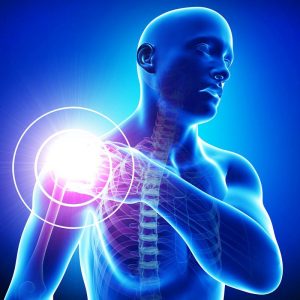
The self-reported prevalence of shoulder pain is estimated to be 16-26% and this is the third most common cause of musculoskeletal disorder on consultation (see reference below). Physical factors such as your exercise habits and repetitive (low and high intensity) movements in inappropriate positions can result in injury or chronic pain.
For these reasons, at The Strength Clinic, we consider that there are four fundamental pillars in the way your shoulder should function:
1) Breathing – Breathing properly is very important to maximize performance. A normal person breathes on average more than eight million times a year, and it is likely that he/she does not do it efficiently. Most people use only a small percentage of the body’s ability to draw oxygen from the air into the lungs because they tend to breathe only through the upper respiratory tract (apical breathing), instead of breathing deeper from the most efficient respiratory muscle we have, the diaphragm.
2) Posture – Although overrated most of the time, each individual’s posture may have an influence on the onset of injuries and in the prevalence of chronic pain. Especially when we talk about activities with high impact / high loads (in which biomechanics assumes a fundamental role) and the daily habits of movement that each person has. A poor posture is usually the result of various structural, muscular and joint imbalances. However, it should be noted that our body has a huge adaptive capacity and that the lack of quality movement is probably the main problem. Contrary to what you may think there are no perfect postures!
3) Grip Strength – There is a phenomenon called irradiation, so the higher the grip strength, the greater the activation of nerves and muscles along the kinetic chain. Therefore, there will be an increase in neurological efficiency, and we will have the rotator cuff muscles (supraspinatus, infraspinatus, teres minor, subscapularis) firing the way they should, which is as dynamic stabilizers centering the head of the humerus on the joint, and not otherwise inhibited due to lack of grip strength. The hands are closely linked with the functioning of the physiological and neurological system but unfortunately this is a phenomenon largely ignored in today’s training programs.
4) Joint Position – Rotator cuff training alone will not ensure the functional health of your shoulder. The stability of the shoulder blades, which depends on the mobility of the thoracic spine, is critical to ensure that the glenoid cavity is well positioned for the applied forces. The stability of the hips and trunk is also necessary to serve as a foundation for the position and functioning of the shoulder blades. In other words, if your central axis control is weak, your shoulder blades are most likely to be drawn into unfavorable positions and this will impair force transmission.
Therefore, any strategy aimed at improving the functionality of the shoulder should consider these four pillars because a seemingly strong shoulder is not necessarily a stable shoulder and it is stability that must precede force production.
Pedro Correia
References
Mitchell C, Adebajo A, Hay E, Carr A. Shoulder pain: diagnosis and management in primary care. BMJ: British Medical Journal. 2005;331(7525):1124-1128.
